|
Printables |
PowerPoints |
Online exercises |
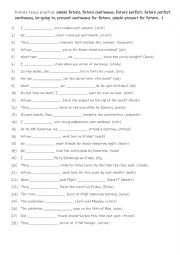
|
B1-B2 Future tense practise simple future, future continuous, future perfect, future perfect continuous, be going to, present continuous for future, simple present for future. 1
Using these future tenses helps students express future actions clearly. They can use simple future for predictions and decisions, future continuous for ongoing actions, future perfect for completed actions by a future time, and future perfect continuous for actions that will be ongoing up to a point in the future. Be going to is used for plans or ...
Level: intermediate
Age: 10-100
Type:
Downloads: 110
|

|
A2+-B1 Gerund or infinitive practise 1
Learning the difference between gerunds and infinitives is essential for achieving accuracy and fluency in English. Gerunds (verbs ending in -ing, like "swimming") and infinitives (the base form with "to," like "to swim") often have specific rules or conventions that dictate their use, which can change the meaning of a sentence. For example, "I sto...
Level: intermediate
Age: 8-100
Type:
Downloads: 114
|
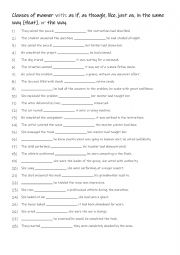
|
B2 -C1 Clauses of manner with: as if, as though, like, just as, in the same way (that), or the way.
Students familiarise themselves with the clauses of manner, then read the sentences to determine which clause of manner is needed to complete the sentences. Answers on page 2.
Level: advanced
Age: 10-100
Type:
Downloads: 125
|
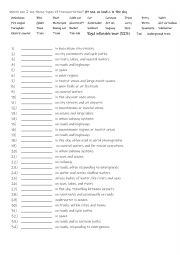
|
A2 + B1+ 34 types of transportation and where you can see them
Students match the type of transportation to the correct definition and place where they can be found. There are some new types such as Segway, Drone and Electric scooter etc. Answers on page 2.
Level: intermediate
Age: 8-100
Type: worksheet
Downloads: 118
|
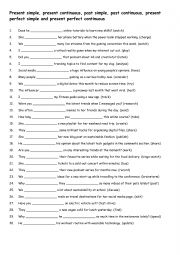
|
A1+-A2 Practise with comparatives and superlatives 2
Students read the sentence and complete the sentence with the correct form of the given adjective in (). Each form is used 13 times! Answers on page 2.
Level: elementary
Age: 8-100
Type:
Downloads: 105
|

|
A2-B1 Practise with for, since, while & during (4)
Learning to use for, since, during, and while is important because these words help student�s express time accurately in English, especially when talking about the duration and timing of events. For indicates the length of time an action takes place, while since pinpoints when an action started and continues until now, helping to show continuity. D...
Level: intermediate
Age: 9-100
Type:
Downloads: 113
|

|
B1-B2 Practise with future continuous, future perfect & future perfect continuous 1
Students should learn the future continuous, future perfect, and future perfect continuous tenses to express a variety of future actions and events more clearly. The future continuous describes ongoing actions at a specific future time, the future perfect indicates actions that will be completed before a certain future point, and the future perfect...
Level: intermediate
Age: 9-100
Type:
Downloads: 116
|

|
B1+-C1 Onomatopoeia helps bring vividness and realism to writing 3
Mastering onomatopoeic words also enhances student�s creativity and ability to connect language with the sounds of the world around them. First, students need to familiarise themselves with the 25 words and their meaning. Then they read the sentences to see which one is needed to complete the gap-fill. Answers on page 2.
Level: intermediate
Age: 13-100
Type:
Downloads: 115
|
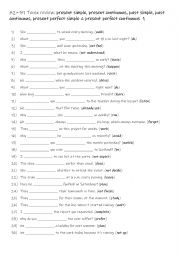
|
A2+-B1 Tense review: present simple, present continuous, past simple, past continuous, present perfect simple & present perfect continuous 1
Learning these tenses is essential for effective communication in English, as they allow students to express actions and events across different timeframes. The present simple and present continuous help describe habits, routines, and ongoing actions or future plans, while the past simple and past continuous enable clear narration of completed acti...
Level: intermediate
Age: 9-100
Type:
Downloads: 108
|
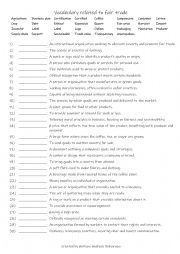
|
B1-B2 Vocabulary related to fair trade
First, students need to familiarise themselves with the 25 words and their meanings Then they read the definitions to see which one is being described and write that word in the space provided. Answers on page 2.
Level: intermediate
Age: 12-100
Type:
Downloads: 118
|
|
|
|
|












